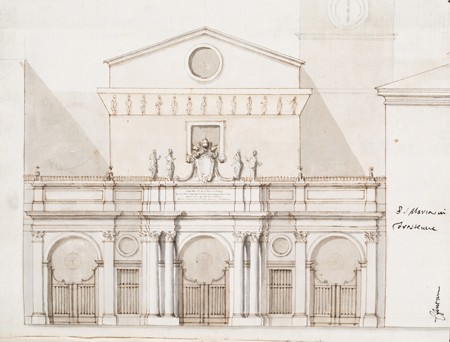Tracing its origin to a portent that occurred before Christ was born, Santa Maria in Trastevere can claim to be the oldest church in Rome. Physically, however, the church on the site today originated around 1140. In a dissertation completed in 1975, I wrote the history of this building from its legendary origin to its twelfth-century rebuilding and festive consecration by Pope Innocent III (1160/1161–1216) in 1215. Based on published and unpublished written and pictorial sources, the history remains valid, but I am increasingly dismayed by its disconnection from the building that actually exists. Although it is still recognizably a “Romanesque” church of the Roman type—a basilica with nave walls carried on colonnades, a transept, wooden roofs, and a porch—the building beloved today by Romans and tourists alike is the product of nine centuries of alterations and embellishments. My ambition now is to write the history of that other church.
My colleagues at CASVA helped me to think through the models for such a history. After discarding afterlife (implies death), biography (too anthropomorphic), and palimpsest (too layered), I am attempting a “processual” history of the kind described by the Italian architect and restorer Gianfranco Spagnesi, who has written that the authenticity of a historic building depends on the valorization of all of its visible phases, “the entire sequence of diverse moments, each dependent on the one that preceded it but to be considered also autonomously.” In the case of Santa Maria in Trastevere, significant “moments”—that is, alterations or enhancements of form that remain determinative in the building’s present appearance—occurred in the sixteenth, seventeenth, eighteenth, and nineteenth centuries. Making use of the National Gallery of Art’s extraordinary collections of rare books and prints, I have concentrated on the eighteenth century, especially on the well-documented moment in 1701 when Carlo Fontana (1638–1714) was commissioned by Pope Clement XI (1649–1721) to rebuild the decrepit twelfth-century porch. This modest assignment was infra
Study of the full complement of Fontana’s designs shows the range of his ambitions for the project, from the complex rhythm, massing, and circular accents of one beautiful drawing in Leipzig to the stripped-down classicism of the design that was actually built, with five equal arches on identical piers. The new porch, described by a contemporary as “di
During my
